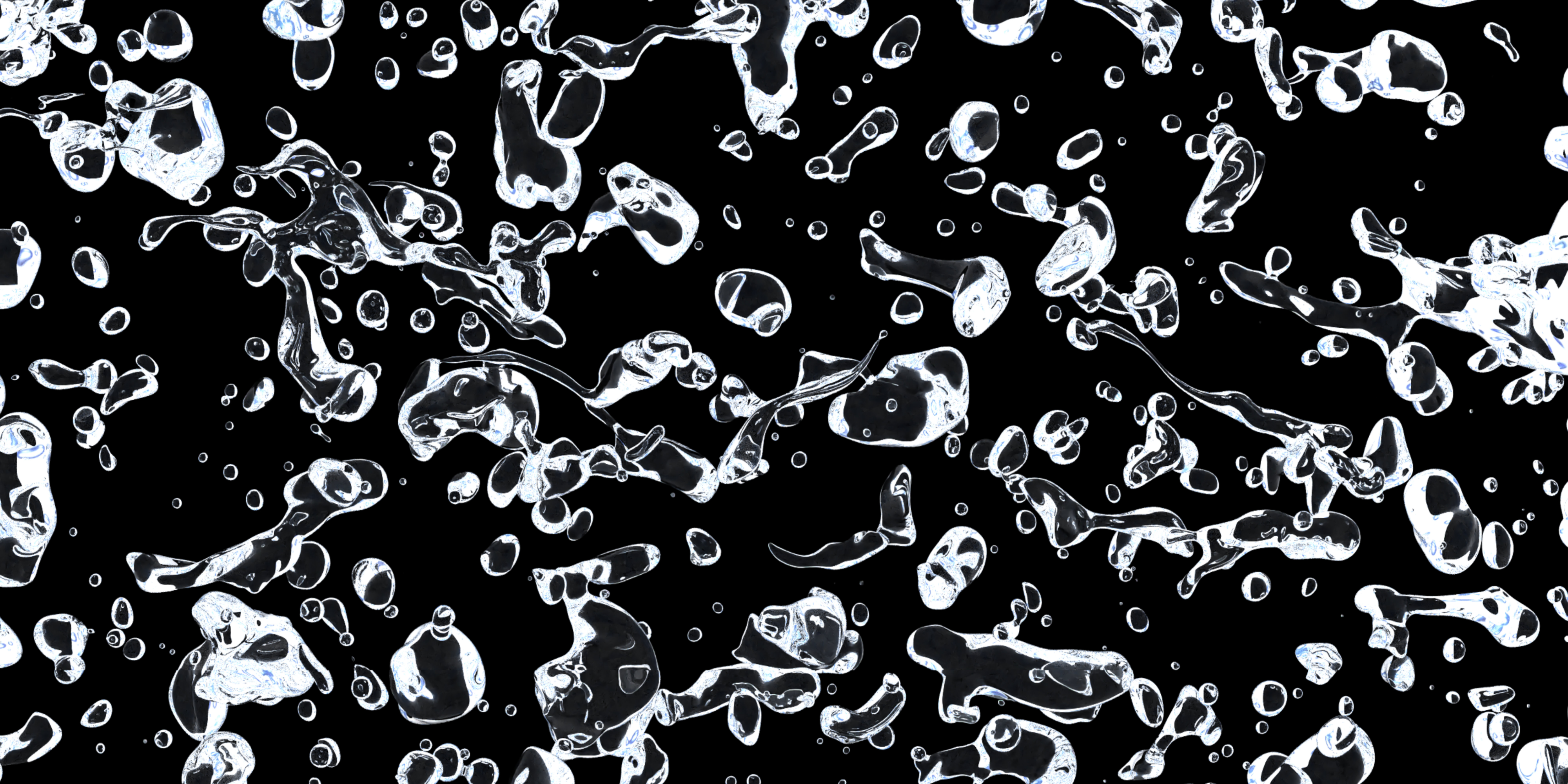ERCOFTAC PC Italy
Breakage and Coalescence of Surfactant-laden Droplets
Author: Alessio Roccon
(Polytechnic Department of Engineering and Architecture, University of Udine)

Surfactants are ubiquitous in everyday life, from soaps and detergents in our homes to pulmonary surfactants in our lungs. Even in tiny amounts, they can dramatically alter droplet behavior. Using direct numerical simulations, we investigate the intricate interplay between turbulence, interfaces, and surfactant dynamics. This visualization reveals the complexity of the dispersed phase, ranging from tiny spherical droplets to larger, irregularly shaped ones. Additionally, the formation of thin liquid threads and ligaments can be observed.
[1] G. Soligo, A. Roccon, A. Soldati (2019) “Breakage, coalescence and size distribution of surfactant-laden droplets”, J. Fluid Mech., 881 244-282.
[2] G. Soligo, A. Roccon and A. Soldati (2020) “Effect of surfactant-laden droplets on turbulent flow topology”, Phys. Rev. Fluids, 5 073606.
Scientific Abstract:
We numerically investigate the breakage/coalescence rates and size distribution of surfactant-laden droplets in turbulent flow. We use direct numerical simulation of turbulence coupled with a two-orderparameter phase-field method to describe droplets and surfactant dynamics. We consider two different values of the surface tension (i.e. two values for the Weber number, We, the ratio between inertial and surface tension forces) and four types of surfactant (i.e. four values of the elasticity number, βs, which defines the strength of the surfactant). Stretching, breakage and merging of droplet interfaces are controlled by the complex interplay among shear stresses, surface tension and surfactant distribution, which are deeply intertwined. Shear stresses deform the interface, changing the local curvature and thus surface tension forces, but also advect surfactant over the interface. In turn, local increases of surfactant concentration reduce surface tension, changing the interface deformability and producing tangential (Marangoni) stresses. Finally, the interface feeds back to the local shear stresses via the capillary stresses, and changes the local surfactant distribution as it deforms, breaks and merges. We observe that Marangoni stresses have a major role in restoring a uniform surfactant distribution over the interface, contrasting, in particular, the action of shear stresses: this restoring effect is proportional to the elasticity number and is stronger for smaller droplets. We also find that lower surface tension (higher We or higher βs) increases the number of breakage events, as expected, but also the number of coalescence events, more unexpected. The increase of the number of coalescence events can be traced back to two main factors: the higher probability of inter-droplet collisions, favored by the larger number of available droplets, and the decreased deformability of smaller droplets. Finally, we show that, for all investigated cases, the steady-state droplet size distribution is in good agreement with the−10/3 power-law scaling (Garrett et al., J. Phys. Oceanogr., vol. 30 (9), 2000, pp. 2163–2171), conforming to previous experimental observations (Deane & Stokes, Nature, vol. 418 (6900), 2002, p. 839) and numerical simulations (Skartlien et al., J. Chem. Phys., vol. 139 (17), 2013).
Publications related to the research:
[1] G. Soligo, A. Roccon and A. Soldati (2020) “Effect of surfactant-laden droplets on turbulent flow topology”, Phys. Rev. Fluids, 5 073606.
[2] A. Roccon, F. Zonta and A. Soldati (2023) “Phase-field modeling of complex interface dynamics in drop-laden turbulence”, Phys. Rev. Fluids, 8, 090501
